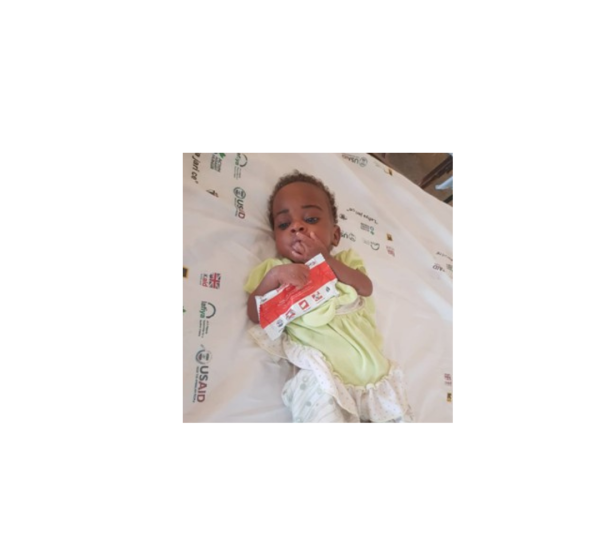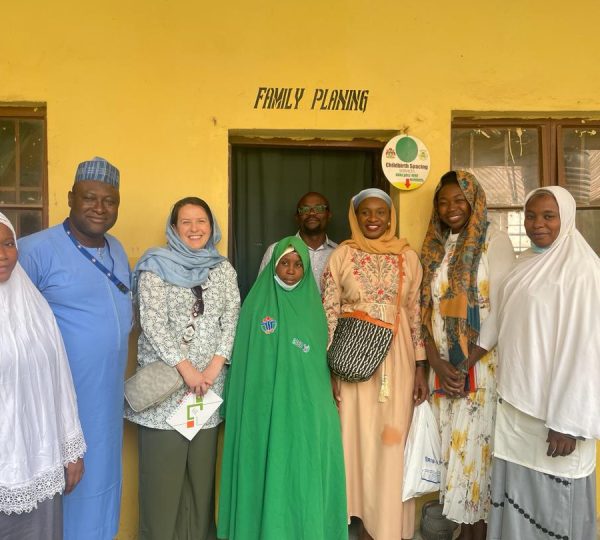An Overview of ICT4D Cash Assets and Transfer Strategy
 SFH till date has implemented over 10 state level campaigns and distributed over 30 million nets within the country. However, in the past these campaigns were mainly paper based in data management and implementation,but the last 2 state campaigns: Jigawa in summer 2018 and in Katsina in September 2018 were innovative in nature. What was the innovation? … keep reading to find out in the words of the Head of Information Technology and Innovation at the Society for Family Health, Babatunde Oyelana.
SFH till date has implemented over 10 state level campaigns and distributed over 30 million nets within the country. However, in the past these campaigns were mainly paper based in data management and implementation,but the last 2 state campaigns: Jigawa in summer 2018 and in Katsina in September 2018 were innovative in nature. What was the innovation? … keep reading to find out in the words of the Head of Information Technology and Innovation at the Society for Family Health, Babatunde Oyelana.
Interviewer: Hello Tunde, and thank you for accepting to be interviewed. What is all this we are hearing about the use of technology in net distribution campaigns?
Babatunde Oyelana: An innovation was introduced to LLIN mass campaign since the middle of 2018, which is the use of technology to implement the campaigns. The application was developed by Red Rose Technology® which is called the Cash and Asset Transfer strategy (CATs). The real intent of CATs is to track cash which is the payment process for the over 2,000 staff involved in the net campaign and the asset which is the commodity, in this case being the nets. The process of tracking commodities involves tracking training process at every level, tracking mobilisation activities, tracking distribution activities and the end process. There are different peripherals deployed to support the application which are the use of other technology devices which include; mobile phones, fingerprint scanners, solar power bags, solar power banks, trip-lite chargers. The application was first piloted in Oyun LGA in Kwara State in 2017 and went full scale in 2018.
Interviewer: Does this really have a major impact on the Campaigns and how?
BO: While past LLIN campaigns have been paper-based, the introduction of the ICT4D RedRose application brought transparency and real-time reporting of data from all campaign timeline activities such as trainings, mobilisation, distribution, personnel monitoring and supervision, and end-process monitoring. For the successful implementation of this innovative and novel technology, different devices were deployed by the ICT4D Unit; Samsung A3 mobile phones for Mobilisation and Distribution teams, Samsung A5 mobile phones for attendance tracking of the different training sessions by Master Trainers, finger print scanners, solar power bags, solar power banks, trip-lite chargers. A single trip-lite charger can charge tens of Samsung phones from 0% to 100% within 30 minutes simultaneously.
Interviewer: Interesting how technology can make such a difference. So how is the Red Rose technology used for Personnel tracking?
BO– All net distribution campaigns have large numbers of state and national personnel who are deployed at various levels. For example, the ICT4D RedRose application as earlier described is used for attendance tracking for different activities e.g. training. For attendance to be taken for a training, a training session is created, and a user is assigned to the session as the attendance taker. This person is responsible for the clocking in and out of all participants. One main question is; how are participants identified and clocked in? The LGA team is responsible for sending personnel list to the Campaign manager who then forwards these lists to the ICT4D Unit for data cleansing and upload to the RedRose CATS Platform. Once a user is successfully uploaded, his/her badge is available for download and cut into a size fit enough for badge holders.
During first clock-in, the QR code on the participant’s badge is scanned first and then biometric is taken. Once a biometric is attached to a badge, only that biometric will be able to use the badge subsequently for attendance purposes. While biometric is needed after scanning the badge for attendance, it can be ignored if the finger scanner fails to capture the fingerprint of the participant. If this happens, the attendance taker is required to send an email to the entire ICT4D Unit detailing why biometric was ignored. Why? This serves as back up for Finance payment processing.
Interviewer- So how does this also impact on the personnel, as a complaint by many of the state and LGA staff is delay in payments during net distribution campaigns, I have even heard that in some states payment is yet to take place months after the campaign is completed.
BO: With this technological innovation, payment processing has become faster and smoother. The technology has also made it possible to easily track the number of participants attending training at the different LGAs as their records are synced to the RedRose CATS portal. Attendance records can be downloaded by training locations by days from the platform for Finance payment processing. The portal URL is accessible to all campaign staff and the ICT4D Unit. All campaign personnel activities are also tracked on the platform thereby making it easy for the Finance team to make payment quicker and faster. It also serves proof of work for personnel.
Interviewer: Does this also improve the quality of monitoring and evaluation of the campaigns, ensuring that work is implemented on time and to the right quality? Does it have an impact on budgets, making the campaign cost efficient?
BO: The RedRose mobile application also makes it possible to track mobilisation and distributions. During mobilisation, via the portal, the ICT4D unit can quickly direct monitoring teams to locations where mobilisation numbers look suspicious since the application captures the coordinates of all different households and communities visited. During distribution, via the portal, data are fed to the dashboard in real-time as all the mobile phones are activated with appropriate data subscription. All mobilisation and distribution data are easily visible via the RedRose portal for real-time reporting and monitoring. With the help of the portal as well, the ICT4D Unit can see communities with very high unredeemed net cards and efforts can be made to reach or to move a satellite DP to them. This enables a most cost effective and cost efficient net campaign as attention is paid to areas where the needs are, rather than running around blind. As you can see, over the last 2 campaigns implemented by Society for Family Health with the Red Rose technology, the net card redemption rate has been above 98% which is a first in Nigeria.
Interviewer: Thank you very much for your time and we look forward to even better results in 2019 as the net distribution campaigns commence in other states, and an impact on malaria in Nigeria for millions of women and children.
BO: It has been my pleasure.



